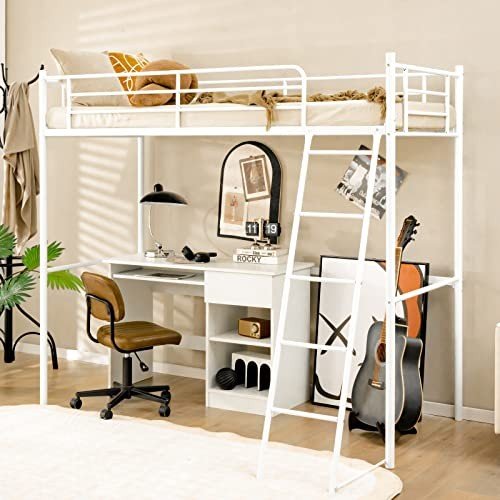7 Simple Strategies To Completely Rolling With Your Bunk Beds
Exploring Bunk Beds: A Comprehensive Guide
Bunk beds have long been a staple in children's bedrooms, dorms, and even homes with restricted space. Not only do they offer a useful sleeping option, however they likewise develop an enjoyable and imaginative environment for kids and a great space-saver for adults and households. This post will check out whatever you require to understand about bunk beds, from types and materials to safety tips and purchasing recommendations.
Table of Contents
- Kinds Of Bunk Beds
- Conventional Bunk Beds
- Loft Beds
- Triple Bunk Beds
- L-Shaped Bunk Beds
- Material Options
- Wood
- Metal
- Security Considerations
- Buying Guide
- FAQs
Kinds Of Bunk Beds
Bunk beds are available in numerous styles to suit different needs and choices. Here's a breakdown of the most typical types:
Conventional Bunk Beds
Conventional bunks normally feature 2 beds stacked vertically on top of one another. These beds are ideal for brother or sisters sharing a room or for optimizing sleeping space in guest spaces.
Loft Beds
Loft beds stand similarly to standard bunk beds but do not have a lower sleeping location. Rather, they frequently include a desk or seating area below, making them a great option for little spaces requiring multifunctionality.
Triple Bunk Beds
Triple bunk beds are designed for 3 residents, with beds stacked in a three-tier configuration. These are less common however can be a fun solution for big families or pajama parties.
L-Shaped Bunk Beds
With one bed positioned horizontally and the other vertically, L-shaped bunk beds are typically geared up with extra functions such as desks or storage drawers and can match corner areas in a room.
Contrast of Bunk Bed Types
Bed Type
Perfect Use
Description
Standard
Shared bedrooms or visitor rooms
2 beds stacked vertically
Loft
Small spaces needing multi-purpose space
Upper bed with open space beneath
Triple
Large households or sleepovers
3 beds stacked vertically
L-Shaped
Corner or flexible spaces
A mix of vertical and horizontal beds
Material Options
Bunk beds are made from different products, with wood and metal being the most typical. Best Bunk Bed brandonnelli.top has its benefits and drawbacks.
Wood
- Toughness: Generally robust and can stand up to years of usage.
- Visual Appeal: Offers a traditional appearance that can mix with numerous decorations.
- Weight Capacity: Typically tougher; can support much heavier weights.
- Disadvantages: May be more expensive than metal options and can be vulnerable to scratches.
Metal
- Durability: Generally light-weight and easy to move however still strong.
- Modern Design: Often can be found in streamlined designs, making it appealing for modern areas.
- Cost-Effective: Usually less expensive than wood choices.
- Downsides: Can be cold to the touch in winters and might not have the very same visual appeal for some purchasers.
Safety Considerations
When it comes to bunk beds, safety can not be ignored. Here are key security ideas to bear in mind:
- Guardrails: Ensure that the leading bunk has guardrails on both sides to prevent falls.
- Strong Construction: Check for a solid develop and strong products to withstand weight and movement.
- Weight Limit: Adhere to the manufacturer's weight limit for both the upper and lower bunks.
- Ladder Design: Choose bunks with a safe, easy-to-climb ladder and prevent any sharp edges or rungs.
- Age Restrictions: Most producers suggest that children under the age of 6 ought to not oversleep the upper bunk.
Purchasing Guide
When looking for bunk beds, think about the list below factors to discover the best fit for your needs:
- Space Availability: Measure the room size and ceiling height, making sure there is appropriate space for the leading bunk.
- Bed Size: Decide between twin, full, or bigger sizes based on your needs and the size of the room.
- Style Preference: Consider the total decor of the bedroom to find an ideal style.
- Ease of Setup: Look for a bunk bed that is uncomplicated to assemble.
- Spending plan: Bunk beds come in numerous rate varieties, so figure out a spending plan before beginning your search.
Frequently asked questions
1. What is the recommended age for kids to sleep on the leading bunk?
Children aged six and older are normally advised to sleep on the leading bunk to lessen the threat of falls.
2. How can I make my bunk bed much safer?
To improve security, ensure guardrails are effectively set up and check that the bed is put on a flat surface. In addition, encourage kids to utilize the ladder carefully.
3. Can I transform a bunk bed into 2 different beds?
Lots of bunk beds are created to be convertible. Check the manufacturer's specs for convertibility functions.
4. What devices are available for bunk beds?
Common accessories include bed linens, storage drawers, staircases rather of ladders, and tented canopies for an enjoyable visual appeal.
5. How do I maintain my bunk bed?
Routine checks for loose screws or structural stability can help guarantee safety. Dust the bed frequently and tidy spills promptly to keep the products in good condition.
Bunk beds are versatile and a space-efficient service for numerous living scenarios, from children's spaces to guest accommodations. With numerous styles and materials available, possible buyers have a wealth of options to consider, making sure a combination of usefulness and aesthetics. By focusing on safety and following the suggestions described in this guide, individuals can discover the best bunk bed that suits their space and way of life, all while developing an enjoyable sleeping environment.
